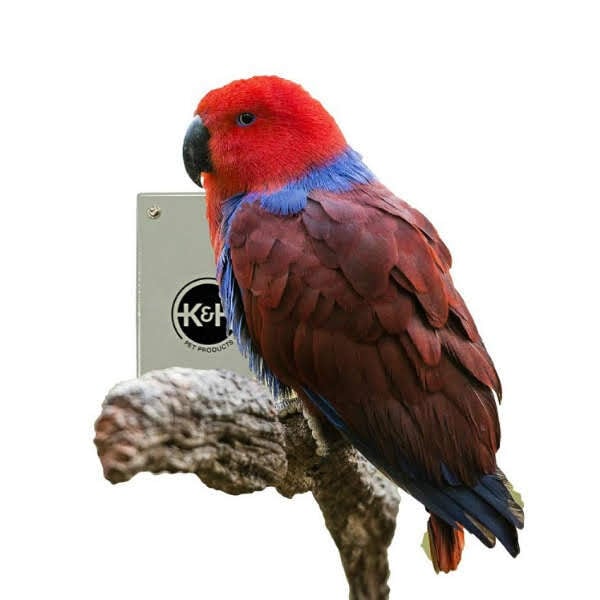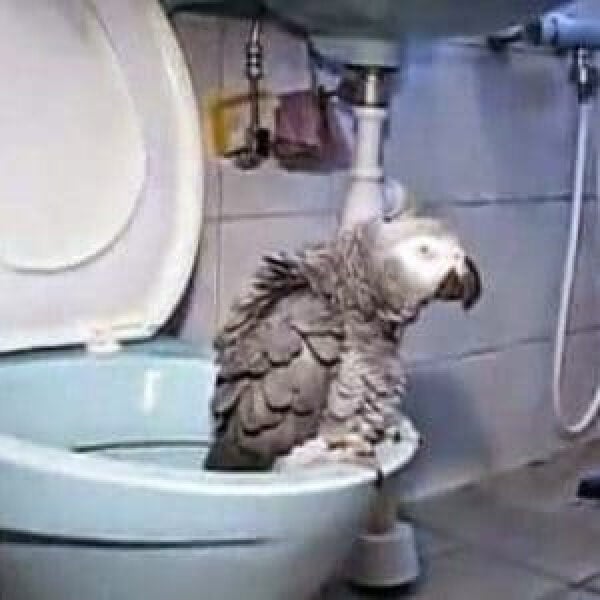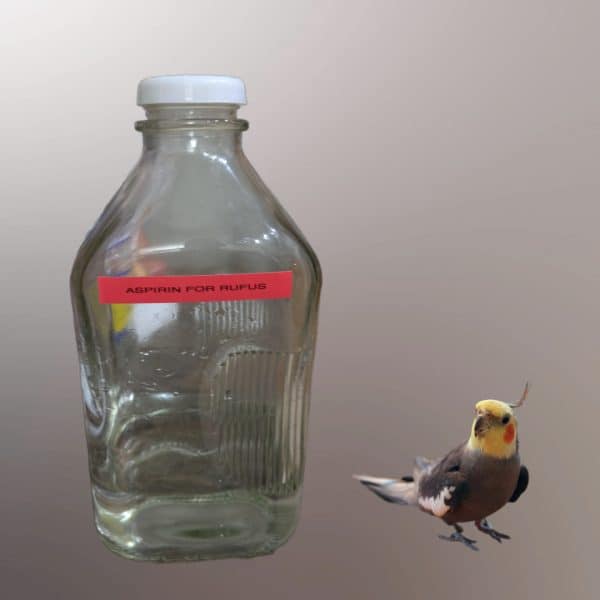Last Updated on by Mitch Rezman
This ‘syndrome’ as vets are calling it, is referred to by many names as listed in the title of this article. For simplicity I will use the word Lockjaw.
First off, I would like to state that the following is from my own independent research while helping others and my own hands on personal experience.
I would also like to state upfront that I never bought into and was very skeptical on it being labeled Bordetella or B. Avium.
As I write this I am less convinced it is a true disease meaning it is a secondary response to something that triggered it.
Hopefully this link will work.
It is skimpy on info.
The article about the Lockjaw Syndrome is on page two: https://1drv.ms/b/s!An8fZNFL62oEgfU7wKp3acwtXLQ2zw (you can escape out of the Microsoft login to read the article)
In reading this I concluded from the commentary that part of the reason that vets suggest having the bird put down is because of this and equally similar findings, if this is what they find when researching.
QUOTE from article: ‘Once chronic inflammation and fibrosis develop, it is unlikely that jaw mobility can be restored.
Antibiotic therapy is often unrewarding in these cases.’
As a breeder this does not stand with me.
I know from hands on personal experience that this is BS meaning they gave up before they began and never tried common sense antibiotics to fit the symptoms and injectable supplements and vitamins.
As to the comment that antibiotic therapy is unrewarding, True, I’ve found that they do not help to loosen the jaw.
It is done by supportive supplements and vitamins.
This IS treatable! Mobility to the jaw can be obtained within a week!
Just that part of the treatment alone would be a 2 day injection of one item and a 5 day vet visit of a once a day injection for another.
Improvement in jaw mobility can be noted within 24-30 hours.
This is excluding antibiotics that may be prescribed.
The following is lengthy and rambling in nature until I get to the main topic.
My first experience with this was in the early 1990’s.
I was a relatively new breeder.
The local bird club was doing a favor another breeder in another part of the state by selling babies out of the nest.
It was unclear the exact reason, but the breeder had sold the parents and was moving, and these were left in the nest.
Being naïve and new, when I heard her name I jumped at the chance to have some birds with her bloodline.
I bought a couple and to my inexperienced eyes they looked fat and healthy.
I was also new to hand-feeding and had thought because of my inexperience that they seemed more difficult to feed.
I tried to be as gentle as I could, but they screamed and fought me when I tried.
They appeared to just champ the beak closed.
I tried to wedge the beak open with my fingertip to insert the syringe to feed. The baby had difficulty swallowing.
Red flags went up that something was very wrong, and I rushed to the vet.
Not good news after the initial exam.
Lockjaw.
Dummy me did not understand and I said from Rabies?
how in the world…
No, most likely a bacterial origin and explained that in the vet community there are various discussions and viewpoints about Lockjaw and how to treat.
He preferred to go by what was in his Avian Medicine book and treat it as Cockatiel Paralysis Syndrome.
Since by then I had proved to him that I was competent in administering shots and medications he showed me what to do and the supplies.
One injectable was for 2 days, the other for 5…once a day for each.
The antibiotics were oral and he showed be how to gavage/crop feed which I would also have to do to get food in the crop.
Before I left he administered the meds and gave Sub-Q fluid for hydration.
He explained what to look for as to a secondary infection of yeast. One of the injectables could generate yeast.
To cover the bases he mixed Nystatin and Diflucan in one jar and instructed to give prior to feeding.
He was very supportive and encouraging.
The office girl phoned every few days to see how I was doing.
At the time I was also hand-feeding several of my own babies.
I did not think and did not ask if the others can get this and should I treat them too, so I didn’t.
I was a long road over several weeks to get the babies well.
One did have problems with beak distortion and overgrowth, so I gained another breeder skill of fixing beaks.
I asked my vet how to go forward with this.
He suggested that I hold back all the babies, the purchased ones and my own, to test breed to see what happens.
Moving forward I learned that the ones treated did not pass this along, BUT…why is there always a but several, I’d guess 50-70% of the untreated one had Lockjaw babies.
Thus, ALL must be treated.
Over the years I have helped others, and have it randomly crop up.
Since I started breeding I had the foresight to take photos and keep a journal of my daily activities.
By the third year I noticed that certain problems occurred at certain times of the year.
For example, trapped in shell and DIS egg were from December into spring.
Why I thought and looked back at the journal that this was because the humidity levels I had noted were very low.
Thus, that was what I like to all the ‘Trigger’ to these events.
Much of my candling and assisted hatch photo collages and info came from this learning experience.
Finding the trigger that resulted in lockjaw was harder because I could not pinpoint any clues from my notes.
I had not changed anything and at the time no new birds and those I had appeared healthy with good reproduction rates.
Late fall I had some problems with the seed and off to the vet to see if it could be tested.
With this batch it was determined the sunflower seed got wet. I must find old notes to say what it was, but it started with Myco something or other.
Back to questions and researching. Quality control is not governed in the US like it is in other countries.
From there I studied seed companies and storage practices, harvest times.
Etc. that gave me a place to start.
Most cases of Lockjaw were occurring late fall when most suppliers were using up the last years crop.
Hmmm… The company I was buying from stored in silos. With our summer heat and humidity this was subject to sweating, buildup of bacteria, Mycotoxins and depleted nutritional content.
Exposure to this lowers the immune system and resistance to disease.
Therefore, from my reasoning, good bacteria in the body becomes pathogenic.
And with lower nutritional content vital nutrients obtained from the diet this further impairs the bird and I am guessing, may be the cause for the jaw to lock up and/or respiratory problems.
I had also noticed in reading prior journals that during the time, period of late fall starting around November, the birds were not as active and a few random deaths of 1-3 old chicks.
What gives?
I later tried to be diligent with nestbox checks and to check to see that chicks could fully open their beaks from day one.
Several of those early deaths were from lockjaw.
Scary, since there are no other visual indicators then if the other chicks have it then and by the time it shows it has become advanced with no simple treatment. In this case it would be of benefit.
In reading Cockatiel Paralysis Syndrome (CPS) can be caused by Giardia and Chlamydia (Psittacosis).
My first year I treated with Doxy twice, only to later learn that all birds have this bacteria in their body and never a problem.
It can be detected in tests under stress, etc. I also had my bouts with Giardia thus flock treated spring and fall each year.
In addition to doing these preventive treatments I also made sure the diet was good for the time of the year.
Yet it was discouraging that Lockjaw still occasionally was seen.
I did learn a lot that has led me to believe that in addition to being seasonal, from all those I helped it was only with those that used seed as the bulk of their diet, not pellets.
Hmmm…a mystery, but not enough reason to switch over to pellets, given my location was very humid and pellets spoiled fast.
My cockatiels would only eat them when crunchy, fresh and when they had babies in the nest.
In being a curious person, I am I thought back to that bad bag of sunflower seed.
When returning the manufacturer, the car stank of a gaggy orange smell.
The only thing I could think this was from was something acting as a preservative, yet none were listed on the label.
And when I asked they denied they used anything.
In retrospect I should have asked what about when stored in silos of transported in (by train) from suppliers?
What was used to prevent oxidation? If fumigation was used for pest, etc., what type.
Moving forward to now.
I have messaged and emailed several vets that I know, some personally and others just acquaintances, about this and working towards a treatment that works.
Bummer, no replies.
I guess they don’t give a rats ass.
I was hoping for someone to pick up the ball as a referral.
I have found something that works for me but will not disclose it.
My suggestion has been to have a person’s vet phone me and I will work with the vet.
Once I hear from someone I will update this.
In the interim this would be a great topic for discussion.
Susanne Russo International Cockatiel Resource
Author Profile
Latest entries
 The Traveling BirdJune 26, 2025Can You Name 5 Parrot Species That Are Living Wild in the USA?
The Traveling BirdJune 26, 2025Can You Name 5 Parrot Species That Are Living Wild in the USA? Bird BehaviorJune 26, 2025How is it Parrots Are Problem Solvers Social Animals and Even Use Tools?
Bird BehaviorJune 26, 2025How is it Parrots Are Problem Solvers Social Animals and Even Use Tools? Bird & Parrot AnatomyJune 25, 2025How a Tiny Chemical Modification Makes Parrots Nature’s Living Paintings
Bird & Parrot AnatomyJune 25, 2025How a Tiny Chemical Modification Makes Parrots Nature’s Living Paintings PigeonsJune 20, 2025How Do Parrots Thrive in Cities Outside Their Native Habitats?
PigeonsJune 20, 2025How Do Parrots Thrive in Cities Outside Their Native Habitats?




